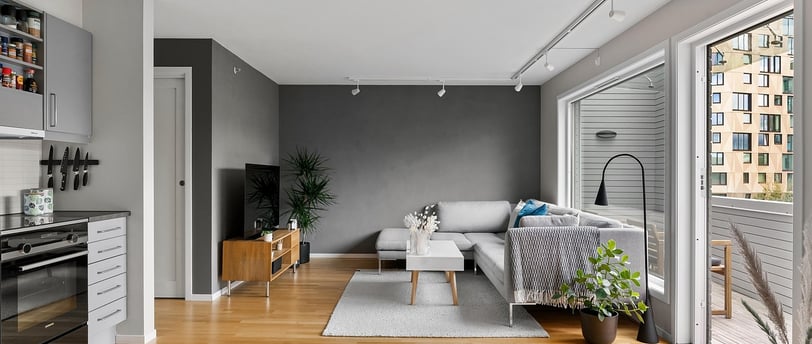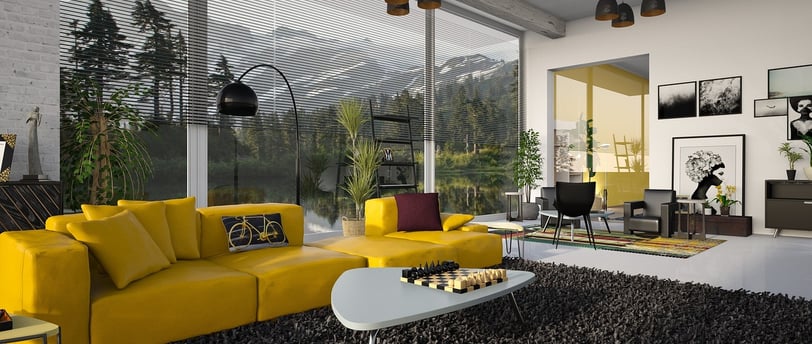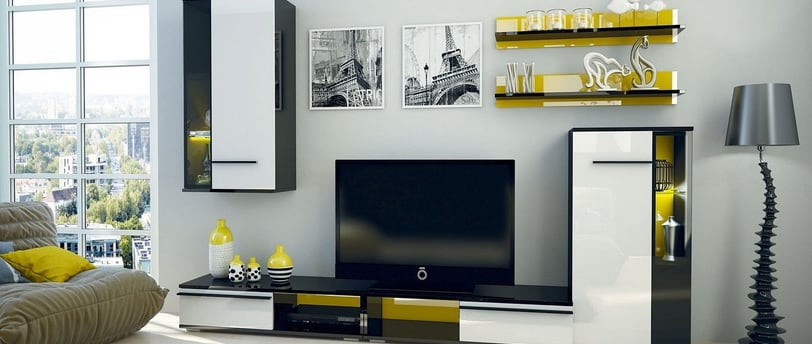What Colors Work Best for Living Room Decoration?
What Colors Work Best for Living Room Decoration? Choosing the right colors involves understanding their interactions and effects within the space. This includes how colors relate to each other, the balance between different tones
HOME COMFORT
Choosing the right colors for living room decoration can significantly impact the room’s atmosphere and functionality. Neutral tones like beige, gray, and white create a versatile and calming backdrop, while accent colors such as deep blues, greens, or warm oranges add personality without overwhelming the space.
The best colors for living rooms balance comfort and style, often combining neutral bases with thoughtful pops of color to create a harmonious environment. This approach allows flexibility in furniture and accessory choices, making the space inviting and adaptable.
Different lighting conditions and room sizes also influence color choices. Lighter shades open up smaller rooms, while darker hues add coziness to larger spaces. Understanding these dynamics helps in selecting colors that complement both the room and its intended use.

Fundamental Principles of Living Room Color Selection
Choosing the right colors involves understanding their interactions and effects within the space. This includes how colors relate to each other, the balance between different tones, and the impact of lighting conditions on appearance.
Understanding Color Theory for Interior Design
Color theory helps identify how colors combine harmoniously. It distinguishes between primary, secondary, and tertiary colors and their positions on the color wheel. Complementary colors (opposite on the wheel) create contrast, while analogous colors (next to each other) provide harmony.
Designers often use monochromatic schemes for a cohesive look by varying shades and tints of one color. For living rooms, this can simplify decision-making and create a calm atmosphere.
Knowing color temperature—warm colors like red or orange versus cool colors like blue or green—is critical. It influences the mood and perceived size of the room, with warm tones typically feeling cozier.
Balancing Warm and Cool Tones
Living rooms benefit from a balanced mix of warm and cool tones to enhance comfort and visual interest. Warm colors add energy and intimacy, ideal for social areas or spaces meant to feel inviting.
Cool tones promote calmness and spaciousness, which suits living rooms intended for relaxation. Combining these tones can offset extremes, preventing the room from feeling either too cold or overwhelmingly vibrant.


A practical tip is to choose a dominant tone (warm or cool) for walls and large furniture. Then, introduce the opposite tone through accents like cushions, artwork, or rugs. This approach maintains harmony without monotony.
Influence of Natural and Artificial Lighting
Lighting dramatically alters how colors appear in a living room. Natural light varies throughout the day, affecting color warmth and brightness. North-facing rooms receive cooler, softer light, while south-facing spaces get warmer, intense sunlight.
Artificial lighting adds complexity. Warm light bulbs (2700K-3000K) intensify warm colors and soften cool ones. Cool light bulbs (4000K-5000K) bring clarity and brightness to cool colors but can make warm tones look dull.
To optimize color choices, test samples at different times and with various light sources. This prevents unexpected color shifts and ensures the palette remains consistent and attractive under typical living conditions.
Popular Color Schemes for Living Rooms
Living rooms benefit from color schemes that suit various moods and functions. Choices range from subtle neutrals to striking hues, with options for cohesive or dynamic aesthetics.
Neutral and Earthy Palettes
Neutral tones like beige, gray, and taupe create a calm and timeless atmosphere in living rooms. Earthy colors such as olive green, terracotta, and warm browns add warmth and a natural feel. These palettes are versatile, pairing well with wooden furniture and soft fabrics.



Using different textures within these colors enhances depth without overwhelming the space. Neutral schemes are ideal for those seeking a sophisticated look that accommodates changing décor trends easily. They also serve as a strong backdrop for colorful accents.
Bold and Vibrant Hue Combinations
Bold schemes use strong colors like navy blue, emerald green, or burnt orange to make a statement. Combining complementary colors, such as blue with orange or purple with yellow, adds energy to the room. This approach suits lively, modern living spaces.
It requires balancing intensity through neutral furniture or muted walls. These colors can highlight architectural features or draw attention to focal points like artwork. Proper lighting enhances vibrancy without causing visual fatigue.
Monochromatic Color Approaches
Monochromatic schemes rely on varying shades of a single color, creating a cohesive and elegant look. For example, different tones of gray or blue can be used on walls, furniture, and accessories. This method simplifies color coordination and adds harmony.
Layering textures and finishes is important to avoid flatness. It allows subtle complexity within an understated palette. Monochromatic colors work well in minimalist or contemporary living rooms where simplicity is prioritized.


Pastel and Soft Color Choices
Pastels like soft pinks, light blues, and pale greens bring a gentle, airy quality to a living room. These colors nurture a relaxed, inviting environment. They work well with white or light wood tones to maintain brightness.
Soft hues suit smaller spaces as they prevent overwhelming the room. They also offer a versatile base, adaptable for seasonal decor changes. This palette is often favored in Scandinavian or coastal-style interiors.
Tips for Coordinating Colors With Living Room Elements
Effective color coordination balances walls, furniture, and decor to create a cohesive look. It requires matching tones while considering textures, styles, and room lighting.
Pairing Wall Colors With Furniture
Choosing wall colors that complement furniture improves visual harmony. Neutral walls like soft grays, beiges, or off-whites work well with both light and dark wood furniture. These shades create a subtle backdrop that highlights furniture without clashing.
For colorful or patterned furniture, walls in muted tones prevent overwhelming the space. Conversely, simple furniture pairs well with richer wall colors such as deep blues or greens to add character.
She prefers testing paint samples in different lighting conditions. This accounts for natural sunlight and artificial lights that can shift color perception throughout the day.
Choosing Accent Colors for Decor
Accent colors bring personality through pillows, rugs, and artwork. The best accents often pick up on minor shades in both walls and furniture to unify the palette.
Using a color wheel helps in selecting accents. Complementary colors such as blue and orange create contrast, while analogous colors like green and yellow offer a calmer, coordinated feel.
She suggests limiting accent colors to two or three to avoid chaos. Metallic accents in gold or silver can also add sophistication without introducing strong new colors.
